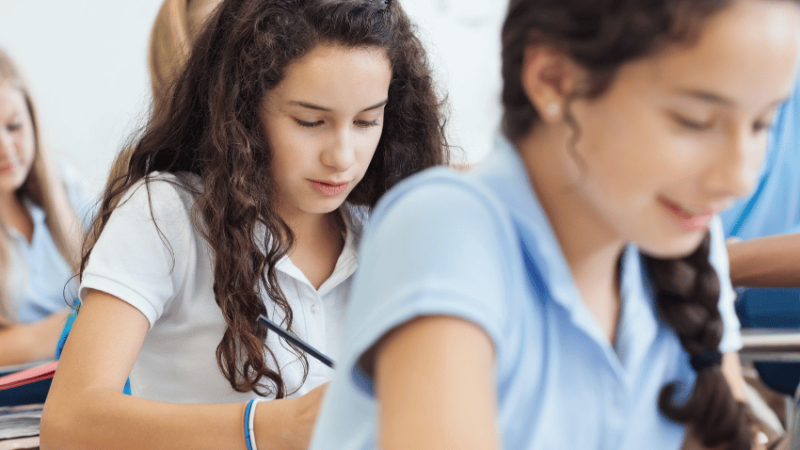7 of the best probability resources and activities for KS4 mathematics

What are the chances you get every student in your class to master probability? Well, these resources will certainly improve those odds

- by Lloyd Burgess
- Former editor of Teachwire
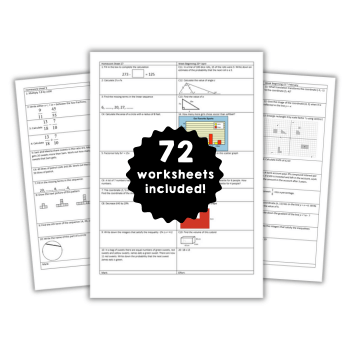
One of the criticisms thrown at maths by non-enthusiasts is that some of the things they learned in school have had no bearing on their lives.
Not all of us get to use Pythagoras on a daily basis, working out the area of a three-dimensional shape isn’t always necessary, and here’s what Cracked.com had to say about long division:
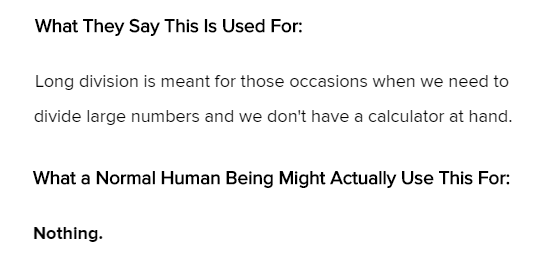
But probability is actually something that’s all around us, particularly when it comes to finances and risk and reward. Understanding this area of maths is one of the more practical things they will learn to take into adult life.
Hopefully, these resources will help get them on their way.
1 | Grey Elephant in Denmark

This old chestnut is a great way to introduce students to probability.
First, they need to think of a number, perform some simple maths, and then (after they’re inevitably left with the number four) think of a country beginning with that number’s corresponding letter (if A=1, B=2 etc).
Most people instinctively go for Denmark, so when asked to think of an animal beginning with the second letter of that country, elephant is what springs to mind.
And when asked what colour that animal is, unless they’ve had a recent Dumbo-esque experience with champagne, they’ll say grey.
Once you get your results, the page breaks down the probability factors involved in why it was able to predict the seemingly unlikely grey elephant from Denmark that many students will have thought of.
Better yet, there’s an immense satisfaction when you actually got a brown otter from Dominican Republic and it tells you you are a unique individual.

2 | In a box
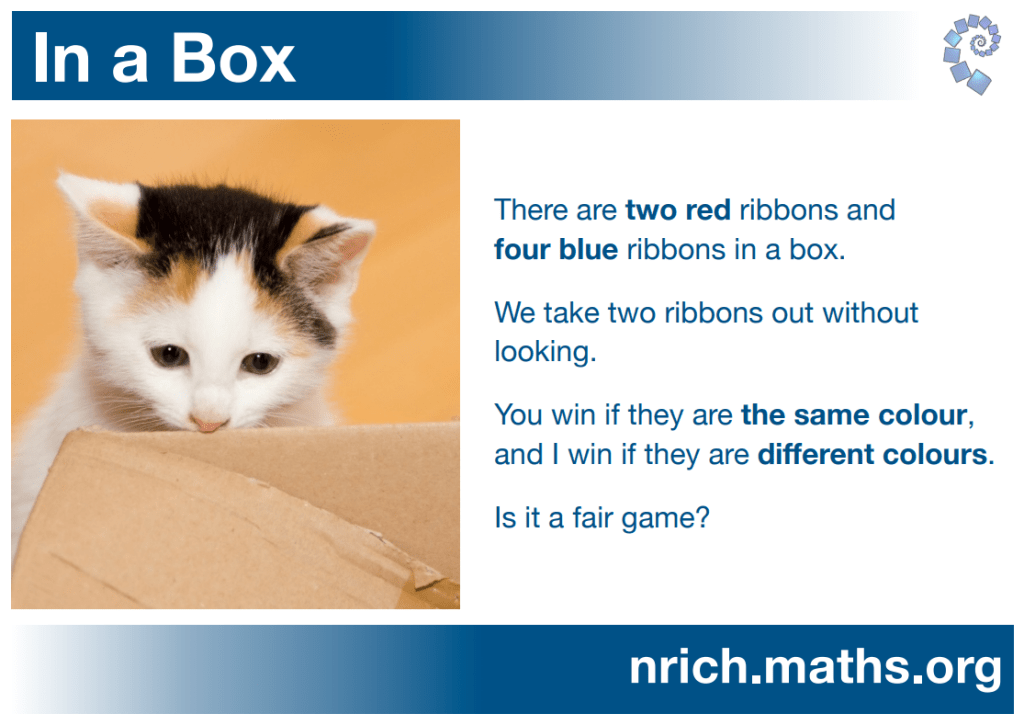
Not only is this a great little exercise, you also get to look at this adorable kitty on the printable PDF poster.
There are loads more NRICH probability tasks for KS4 here.
But you’ll find this particular one here.
3 | Patterns in random events
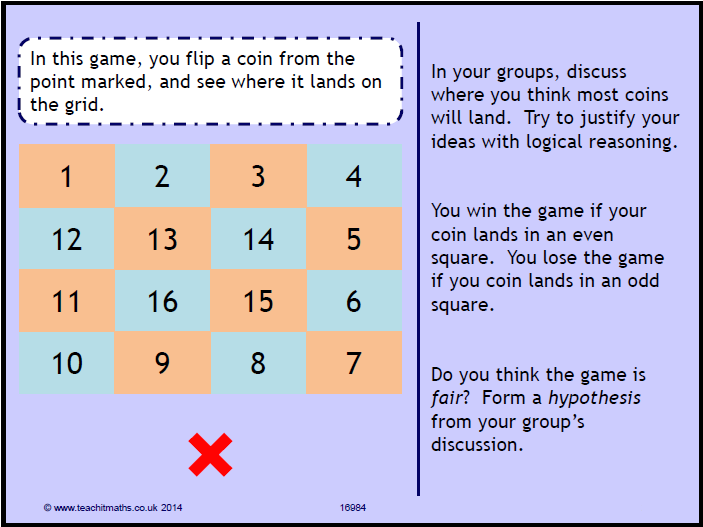
This activity enables students to create their own fairground-style game to investigate the relative frequency of randomly thrown counters landing on certain areas of the board.
Students get to test the game, tally their results and present their findings in the most appropriate form.
It allows them to explore probability through fair testing, and look into what sort of sample size you need to draw conclusions from random results.
Download the printable PDF here.
4 | Rock, Paper, Scissors tree diagrams
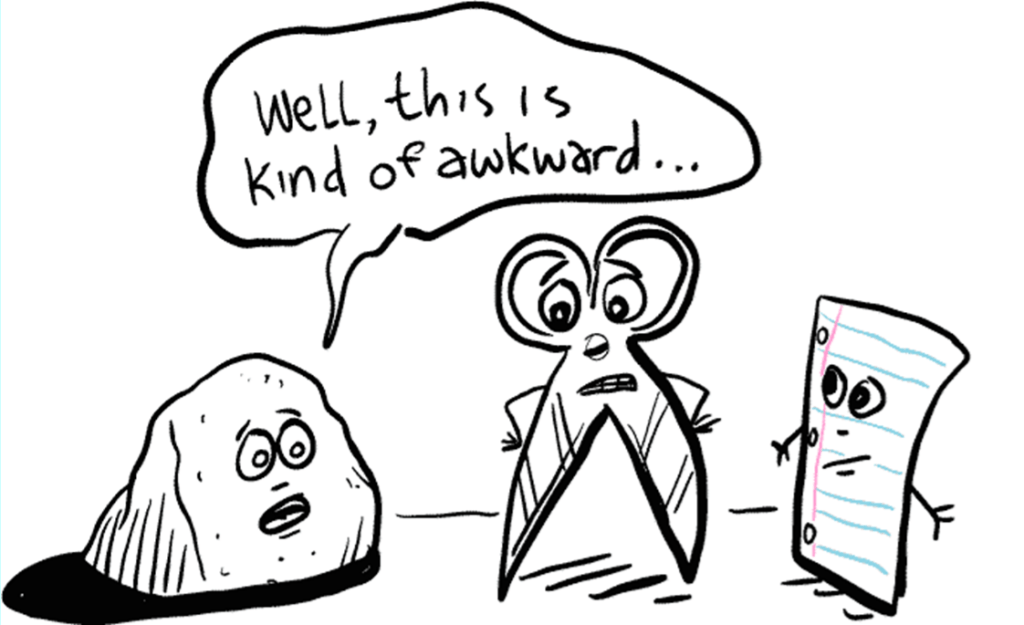
This activity involves the classic game of Rock, Paper, Scissors as a way of introducing tree diagrams.
Pupils play the game in pairs 30 times. Each game is recorded in a simple tally chart, noting if player A wins, player B wins or a draw.
They can then look at the relative frequency from their results as well as the whole-class results, leading on to a discussion about theoretical probability, expectancy and relative frequency.
You can just download the PowerPoint lesson plan here.
Or, you can check out the full post (which includes the PowerPoint download link) here.
5 | Hi-Low Predictions
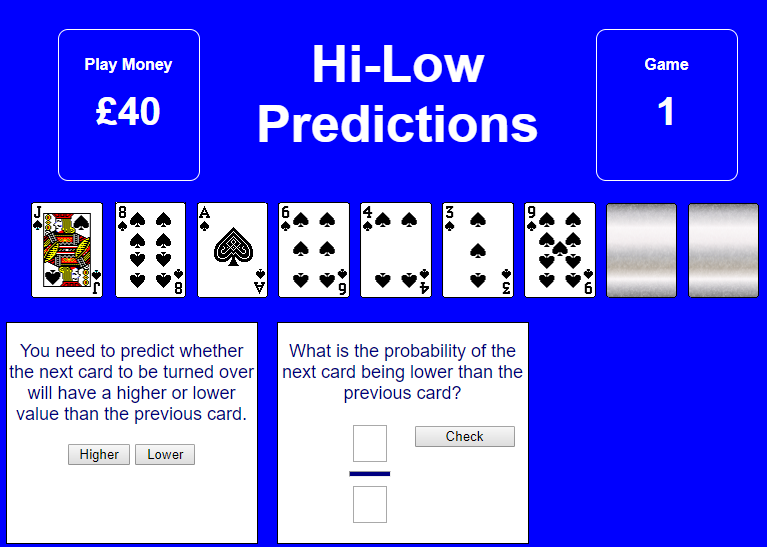
This activity is based on the old card game from the TV show The Price is Right.
Only, instead of terrible 80s and 90s fashion and a crowdful of people shouting ‘higher’ or ‘lower’ at you, you have to actually take the time to work out the probability of each card being higher or lower than the one before.
And while you’re not gambling for actual money (that would be bad) it does keep a score of imaginary finances for you to bet with, so you can easily have a competition in groups or as a class to learn more about risk and reward.
Give your lessons a Brucie Bonus with this activity, here.
6 | OUP probability chapter
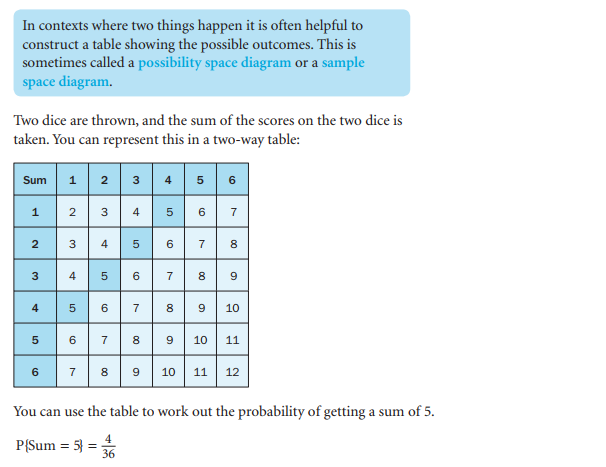
If you want a whole chapter on teaching probability, free, then OUP has you covered.
This 32-page PDF is absolutely packed full of information, ideas and activities.
Simply click here, and it’s yours to download, print and use.
7 | Evaluating probability statements
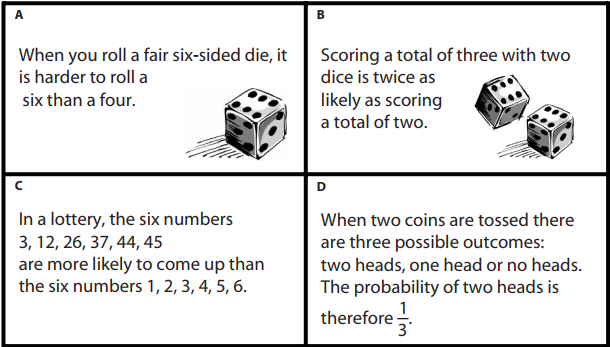
In this resource from the DfE Standards Unit, students discuss and clarify some common misconceptions about probability.
This involves discussing the concepts of equally likely events, randomness and sample sizes.
They will also learn to reason and explain. This session assumes that learners have encountered probability before.
Browse our list of GCSE maths games.








